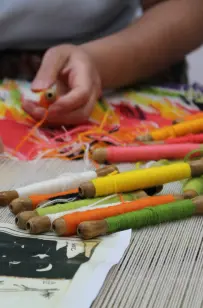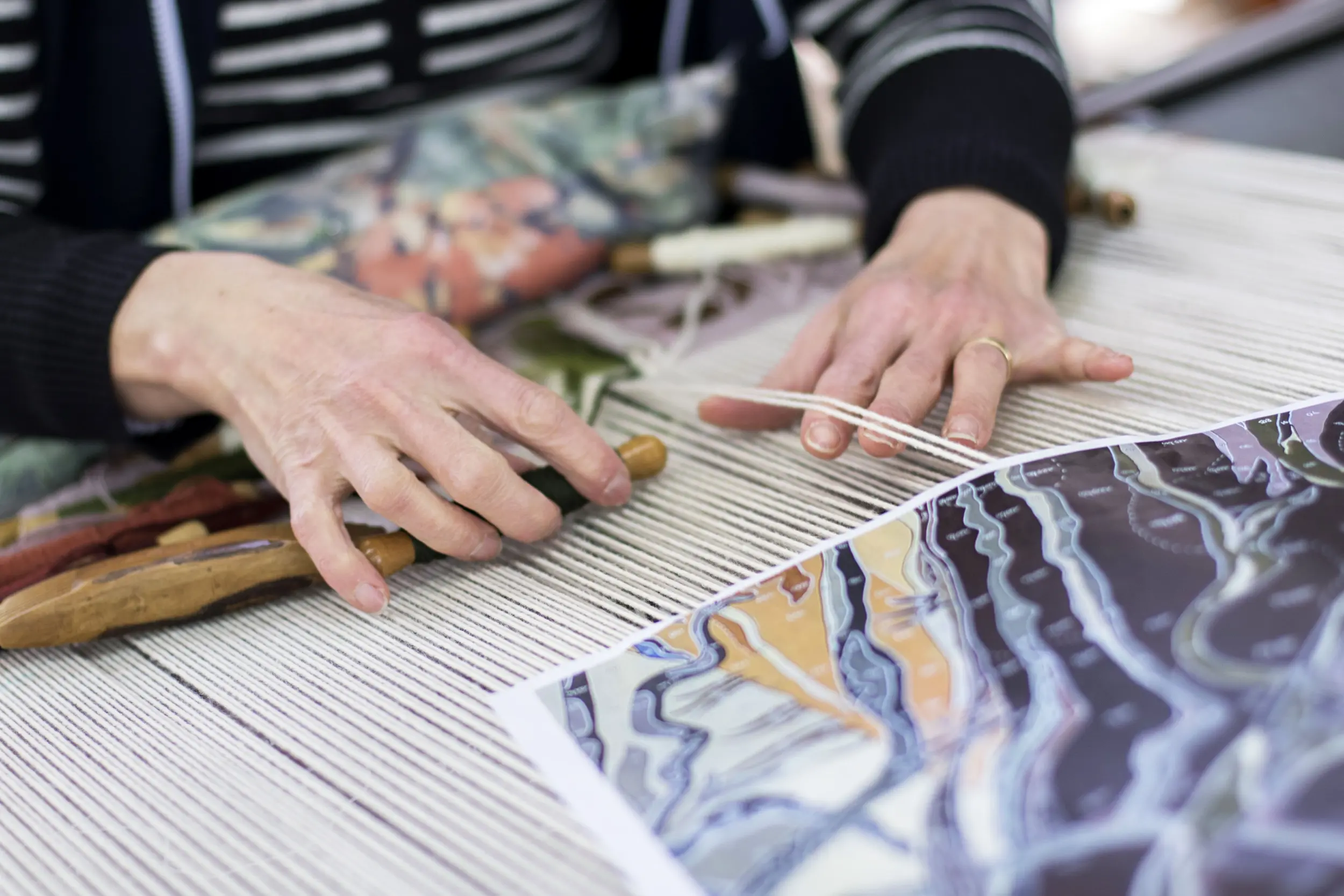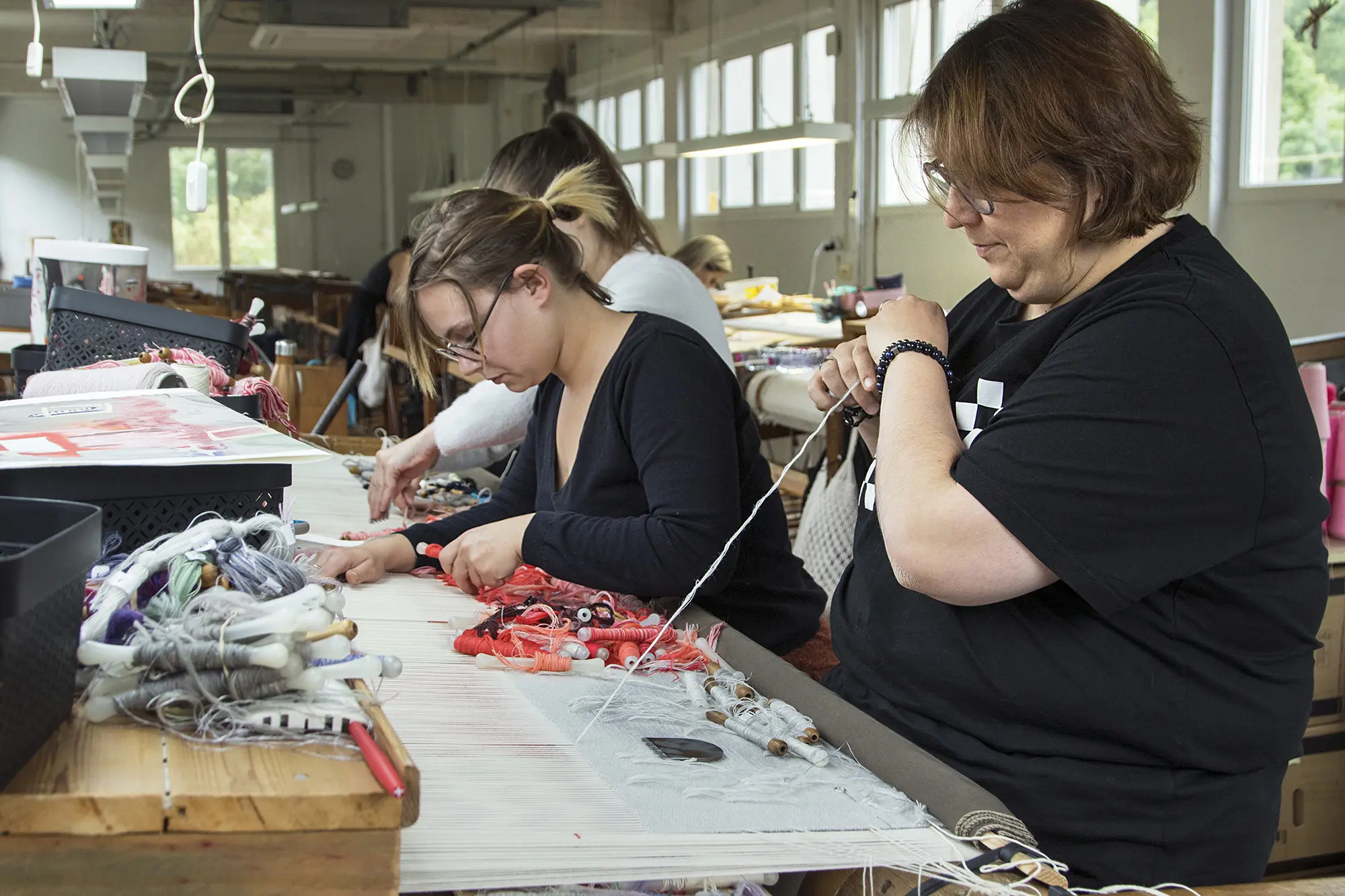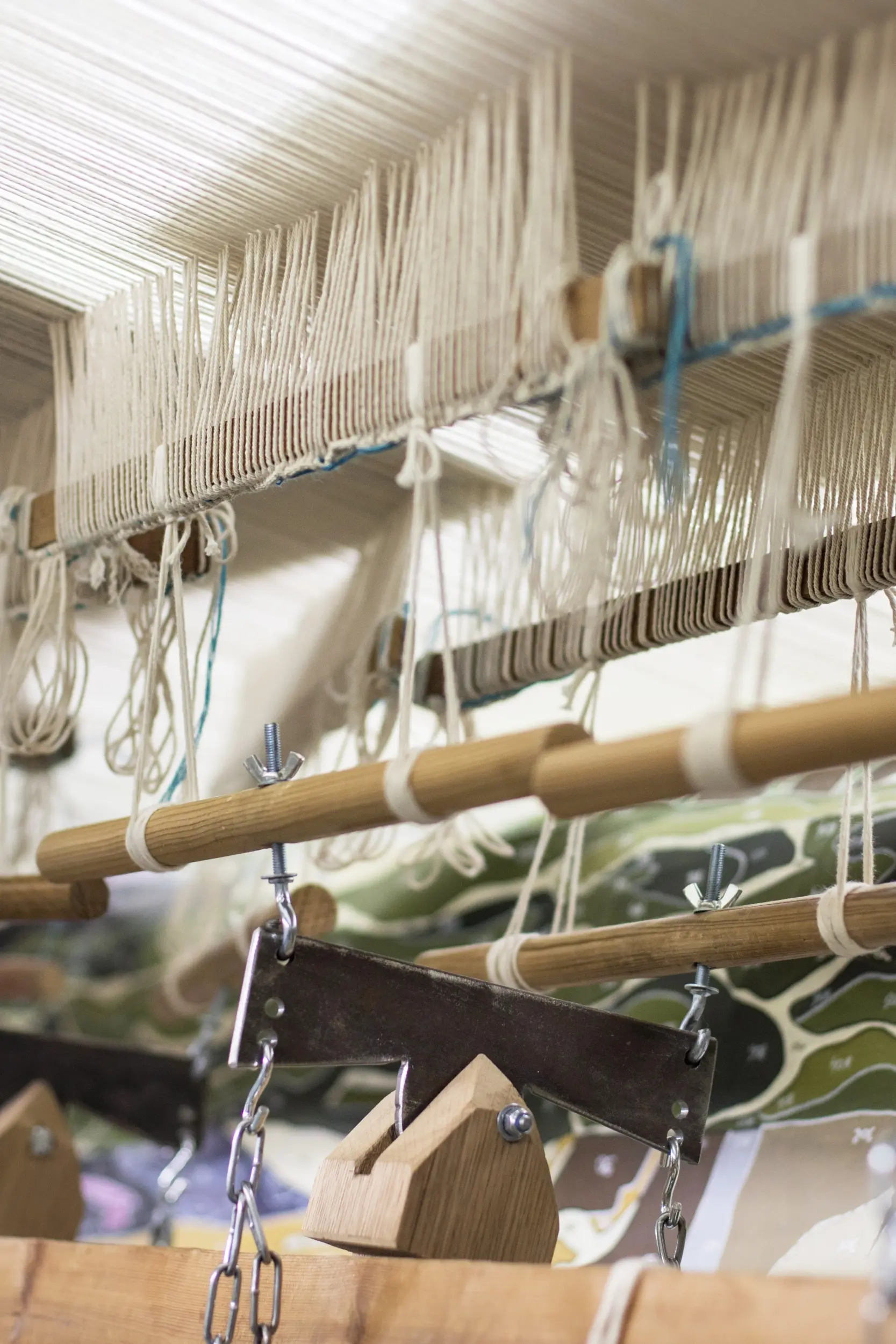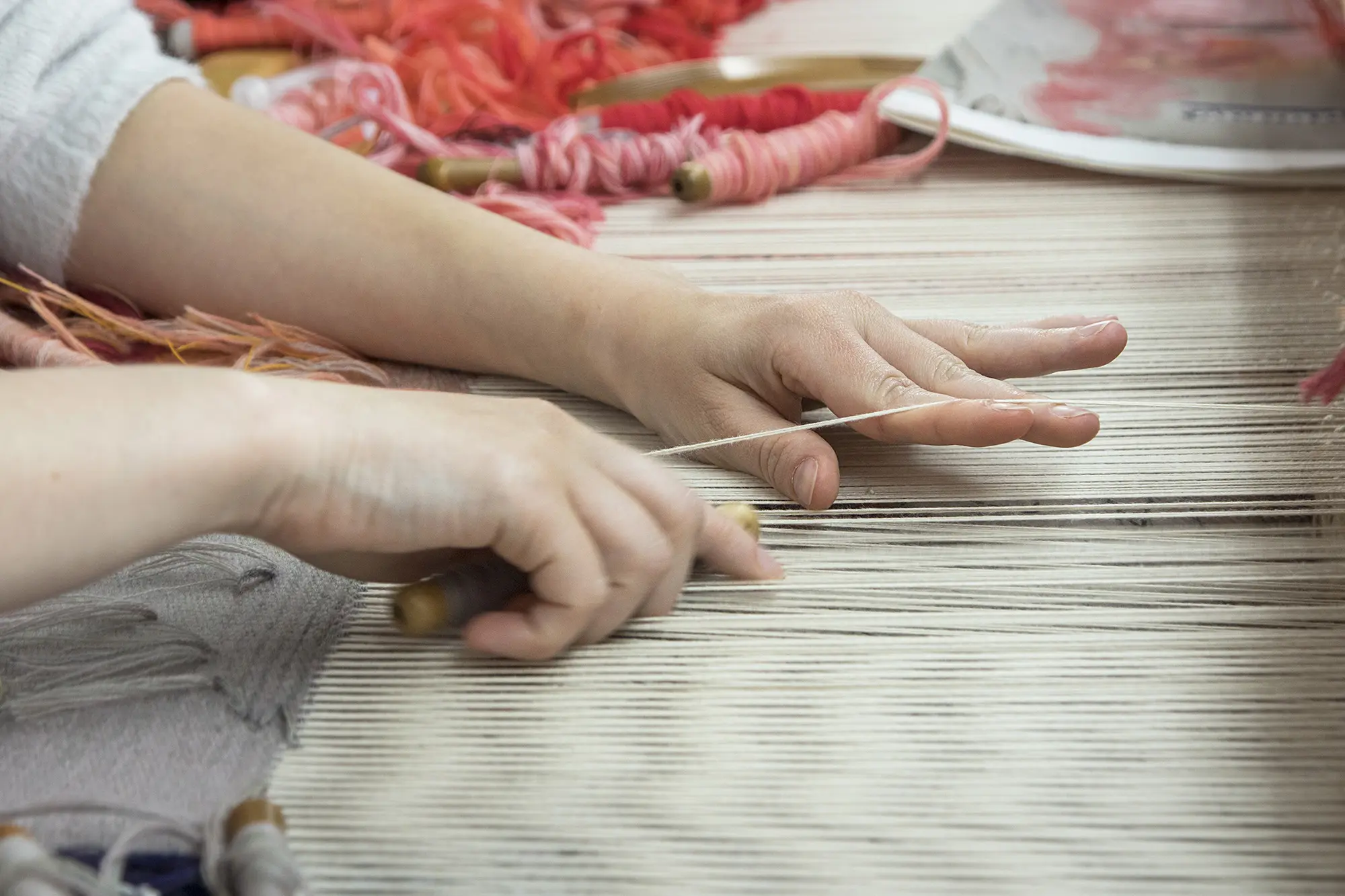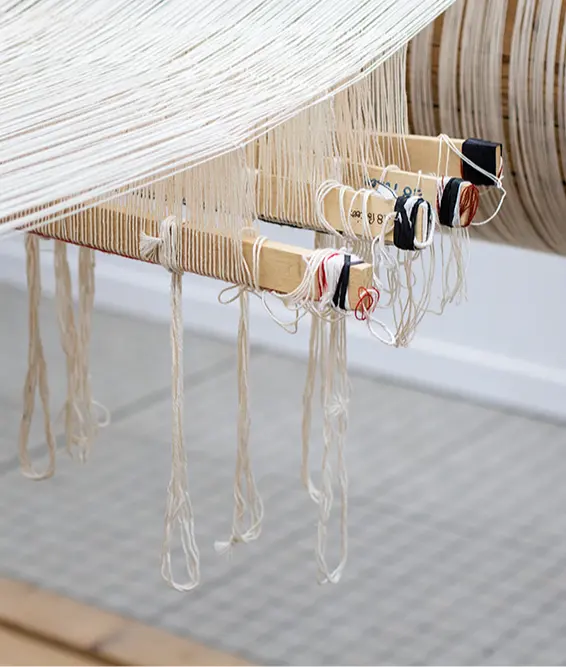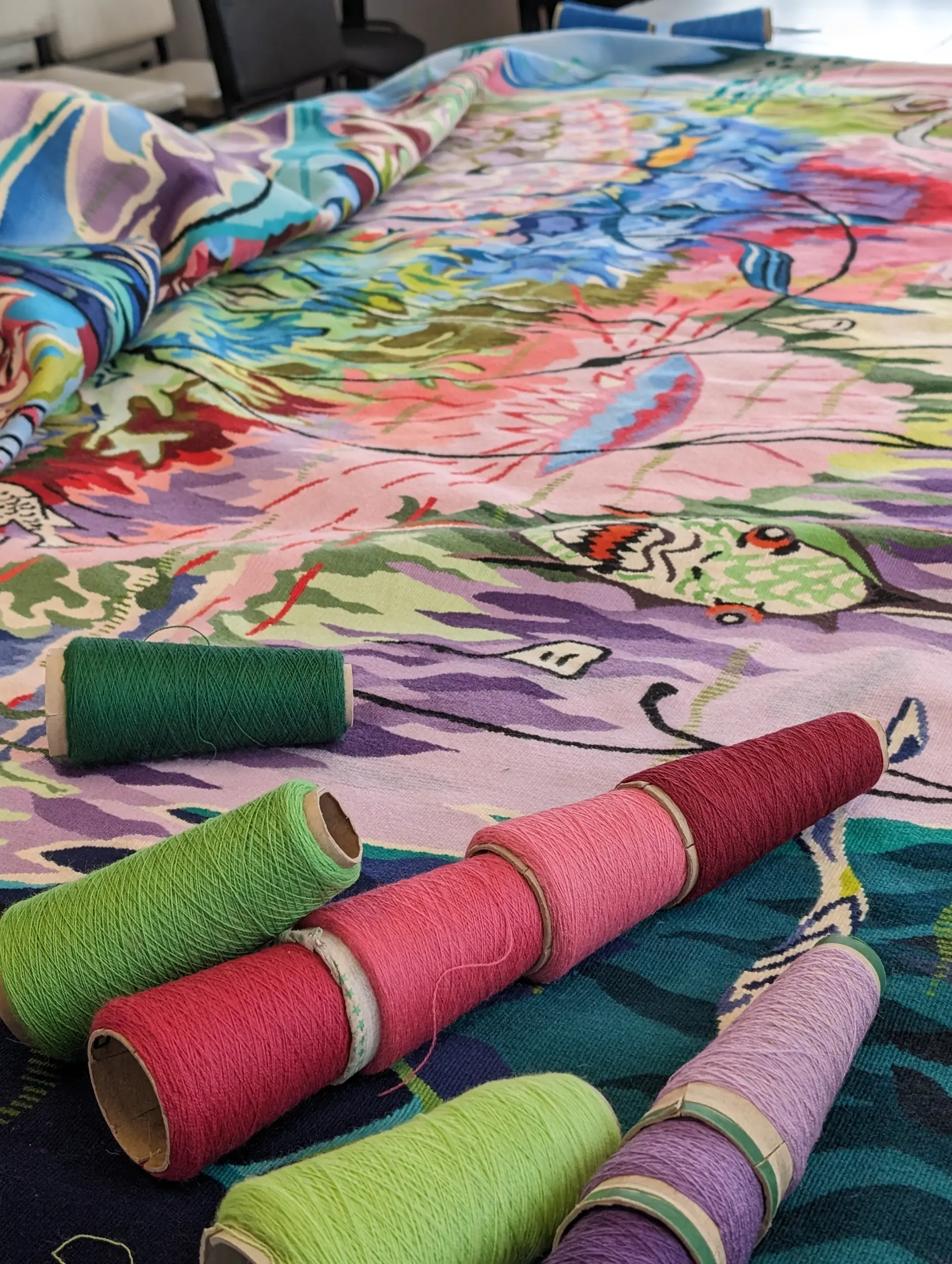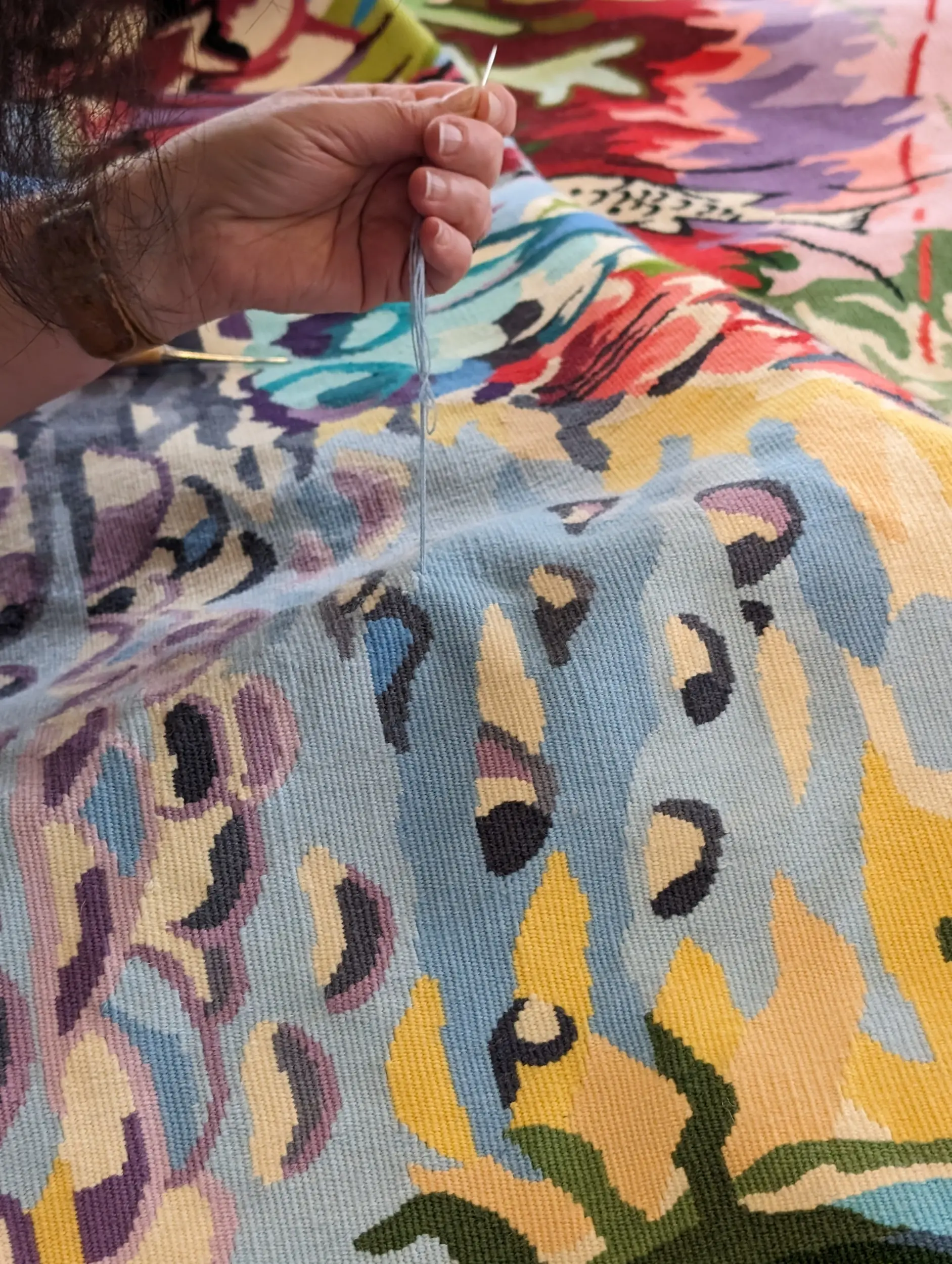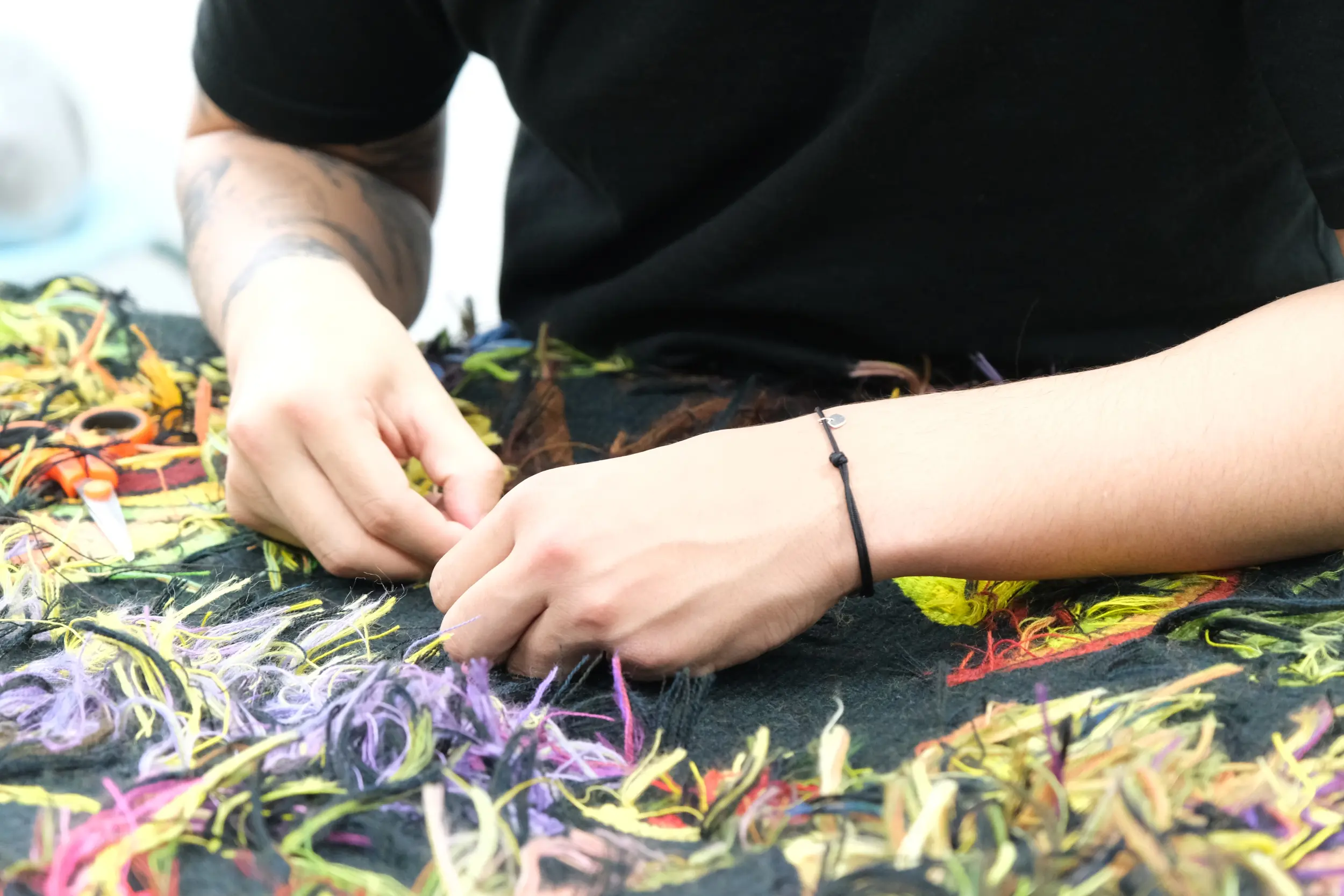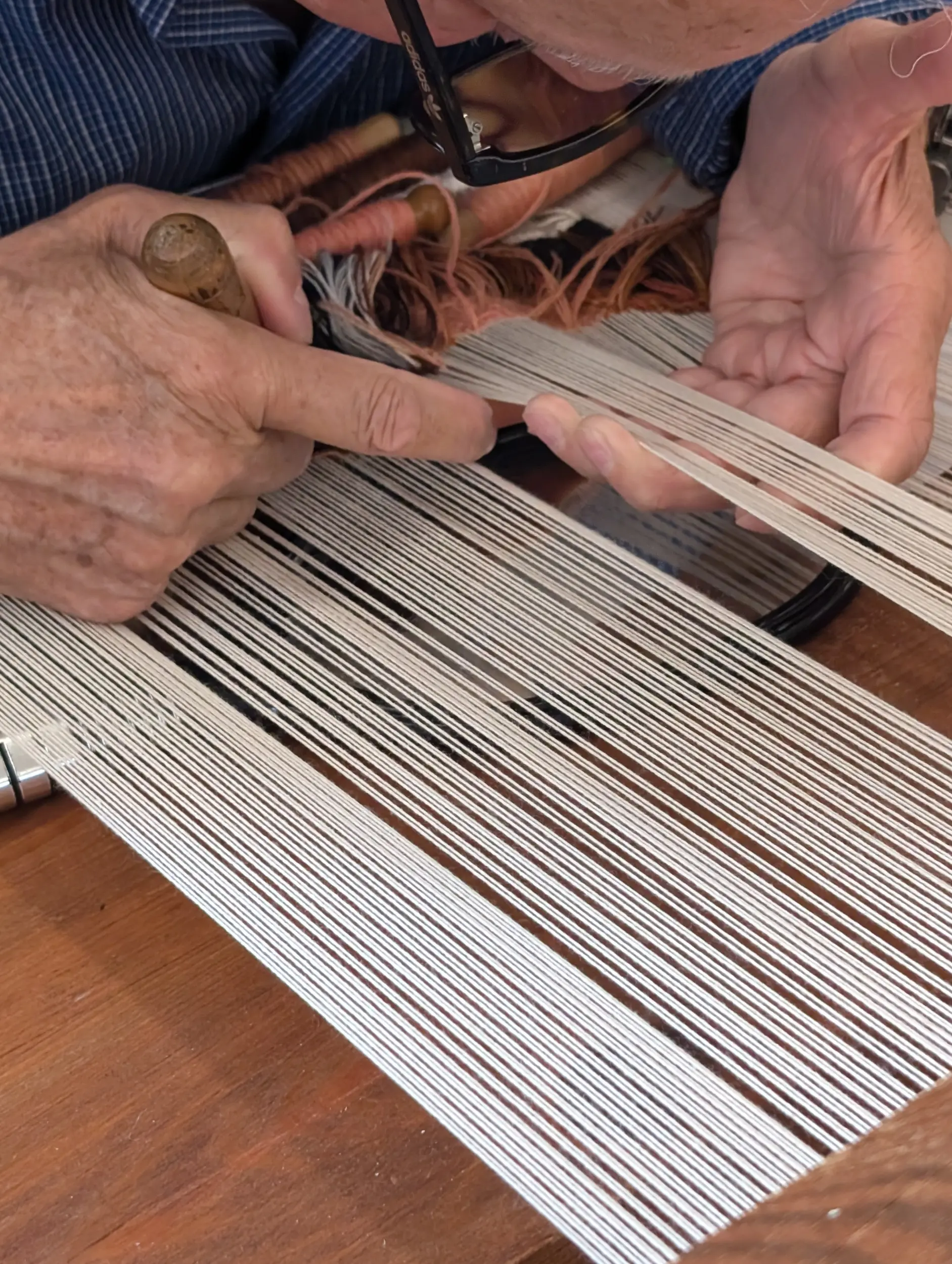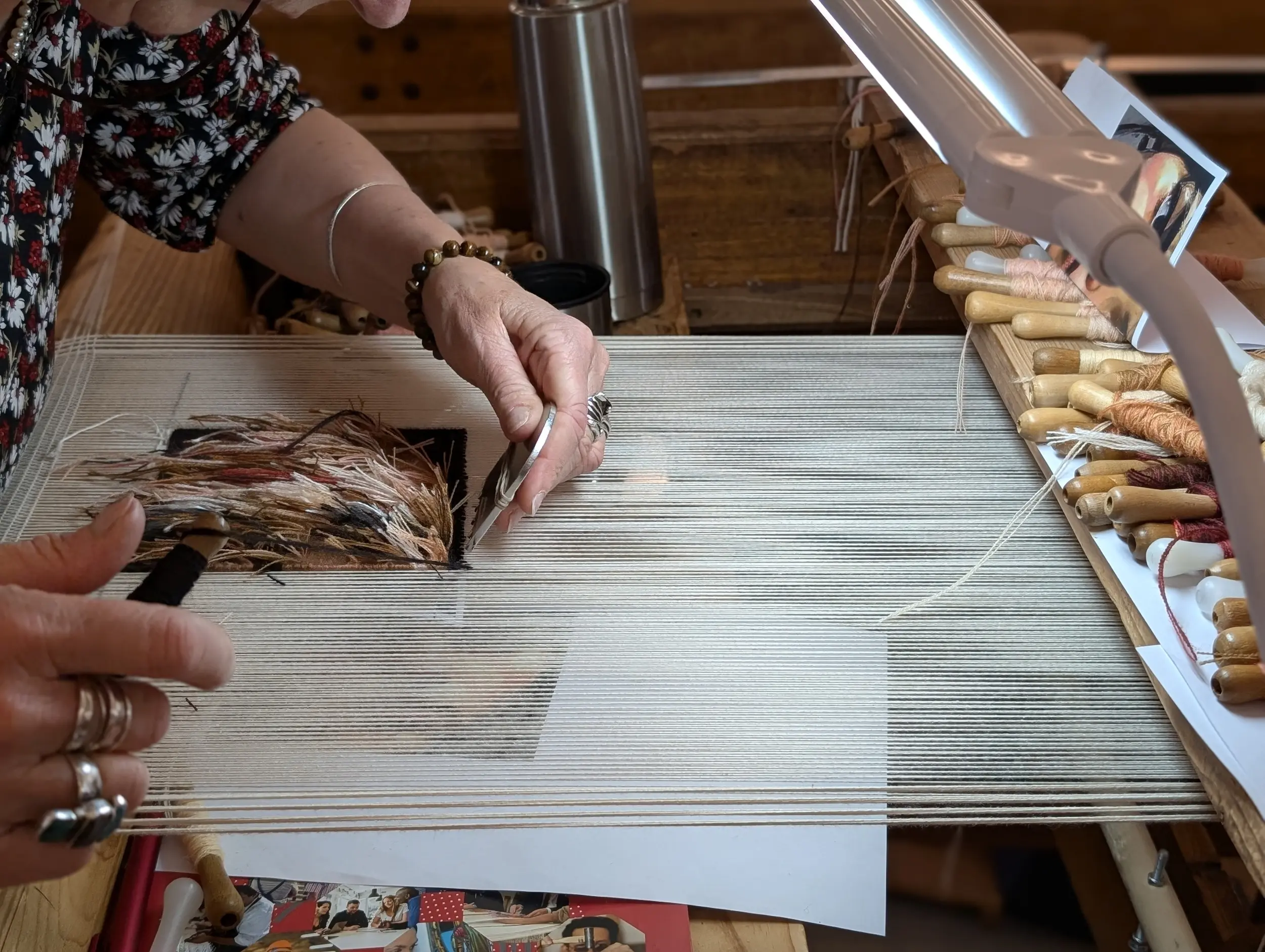Weaving and finishing
The lissier is the tapestry artisan who carries out the weaving on a loom. The name comes from the term “lisse,” which refers to a small cord attached to a warp thread, connecting it to a “marche”—also called a pedal—operated with the foot to separate the odd threads of the warp. This allows the weft threads to be passed through using a shuttle, usually made of wood. A tapestry is created by completely covering the warp with the weft.
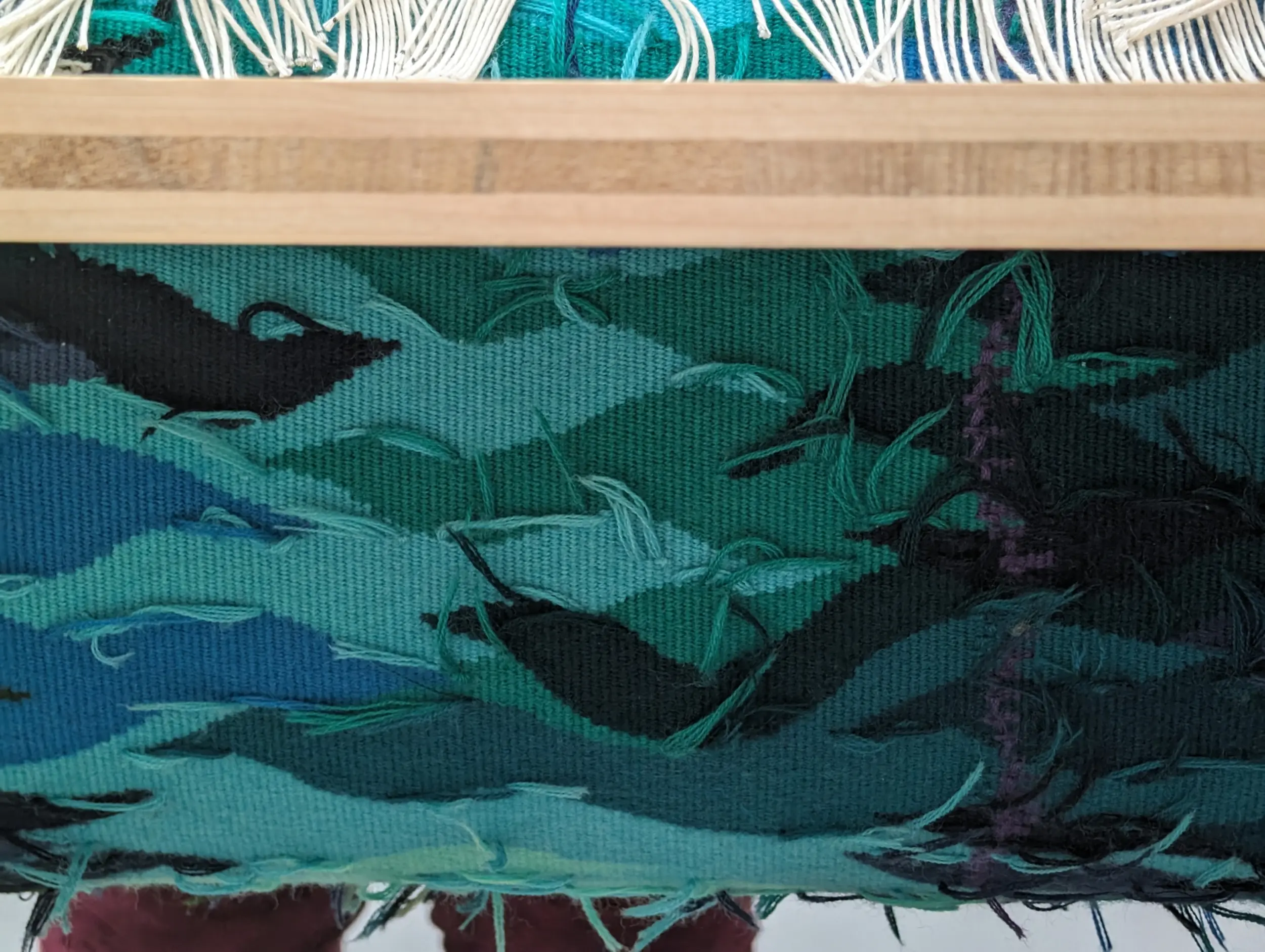
Presentation
Unlike mechanical weaving, hand weaving on a low-warp loom allows for an infinite number of colors and enables the lissier to constantly adjust their movements. The Aubusson tapestry technique can thus produce a wide variety of effects and textures within a single piece. On a horizontal low-warp loom, the lissier weaves on the reverse side of the future tapestry. They can only partially check their work (as the tapestry is rolled up progressively) by placing a mirror between the loom’s warp threads and the cartoon that guides the weaving. An Aubusson tapestry therefore retains its mystery throughout the weaving process. The lissier themselves, as well as the artist, discover the work in its entirety only when the warp threads are cut to release the tapestry during the “tombée de métier” (the moment the tapestry is taken off the loom).
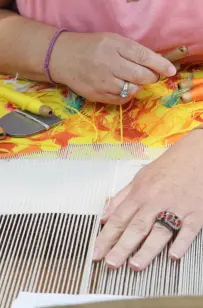
The artist-weaver duo, an Aubusson tradition
The traditional relationship in Aubusson between the artist, who designs the model to be woven, and the lissier, who interprets it, is a guarantee of high-quality production. Aubusson has always been a place where craftsmanship meets the most contemporary forms of creation. Tapestries are four-handed works, bearing two signatures — the result of close collaboration between a lissier, a master artisan, and a creator, whether they are a painter, visual artist, designer, architect, or decorator.
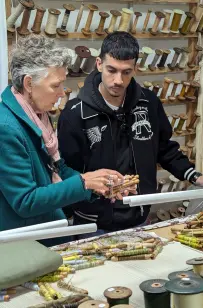
« It’s all a matter of fair relations and honesty, not of vain competition, but of mutual respect for the greater good of a shared work. »
The craftsmanship of the weaver
The textile interpretation of the artist’s work is a true expression of the lissier’s expertise—both through their technical skill and their sensitivity and understanding of the artistic intent. The excellence of a tapestry lies in the success of this relationship between the creator, who expresses themselves through their own medium, and the lissier, who envisions its woven translation.
The finishing phase of a tapestry includes stitching the edges and addressing the interruptions in weaving caused by color changes.
